We discovered that there once was a well in the basement of the ell, but learned it had been filled in. During the first months we lived here, we had it in the back of our minds to dig it out and restore it, but other things quickly took priority. We didn’t know how old it was, how deep it was, or if there was even water in it. We just had a rough idea where it was- a pile of rocks in the corner of the basement, where the ell abuts the barn.
When Mike’s crew was digging for the concrete wall under the barn this past fall, they hit quite a stream of water pouring from the ground in that corner, and based on the flow, we assumed it was possibly a spring-fed well. One day we shone a flashlight through the rocks where we thought the well was, and saw water reflecting back. Then last week while I was building a platform for the furnace (more on that later), Jenny pulled a couple of stones from the pile, and exposed the well in its entirety. It was NOT filled in, but merely capped with rocks and bricks wedged together. It was also certainly hand dug, deep, and full of water. She dropped a weight (an old wrench) tied to a string, and it went down about ten feet once it hit water, which at that time, was about three feet below the surface. We could see it was lined with the same stone size, color, and type as the walls in the basement, so we’re assuming it was dug around the time the house was built. There was no mortar or waterproof lining of any kind, and no pipes or anything leading into it, so it was not a cistern (not all that uncommon), but was actually a hand-dug well.
Mike had offered to dig out the well when they were here late last year, so after letting him know what we found, he and a couple of his guys (Nick and Bailey) came over this week to see about clearing it out. After pulling off the top stones, and exposing the well clearly, we could see some timbers laying across the well, so they dropped a sump pump to clear the water out. The water being pumped out was clear as the water from our tap, and we measured a full ten foot depth, with the well dropping a full fourteen feet from the surface. Once all the water was pumped out, Mike drew the short straw, and climbed down to clean out the debris that had fallen in over the years. We pulled up quite a pile of timbers, which may have been the old cover or some bracing, as they were old, and very waterlogged, but didn’t stink, which was surprising!
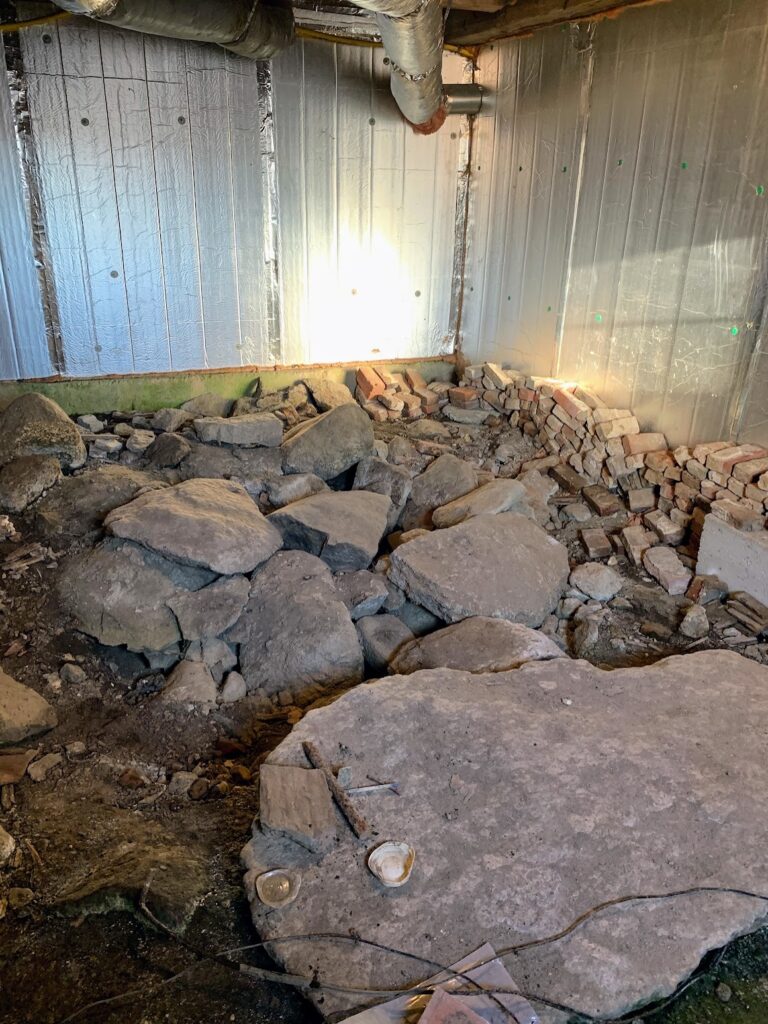




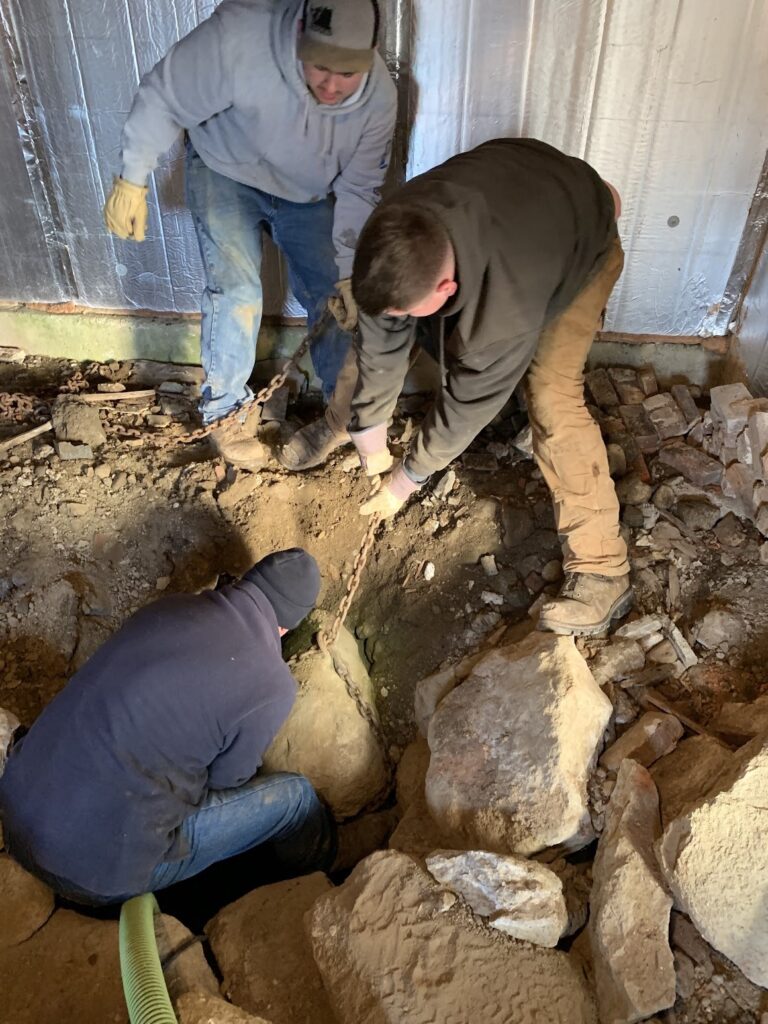

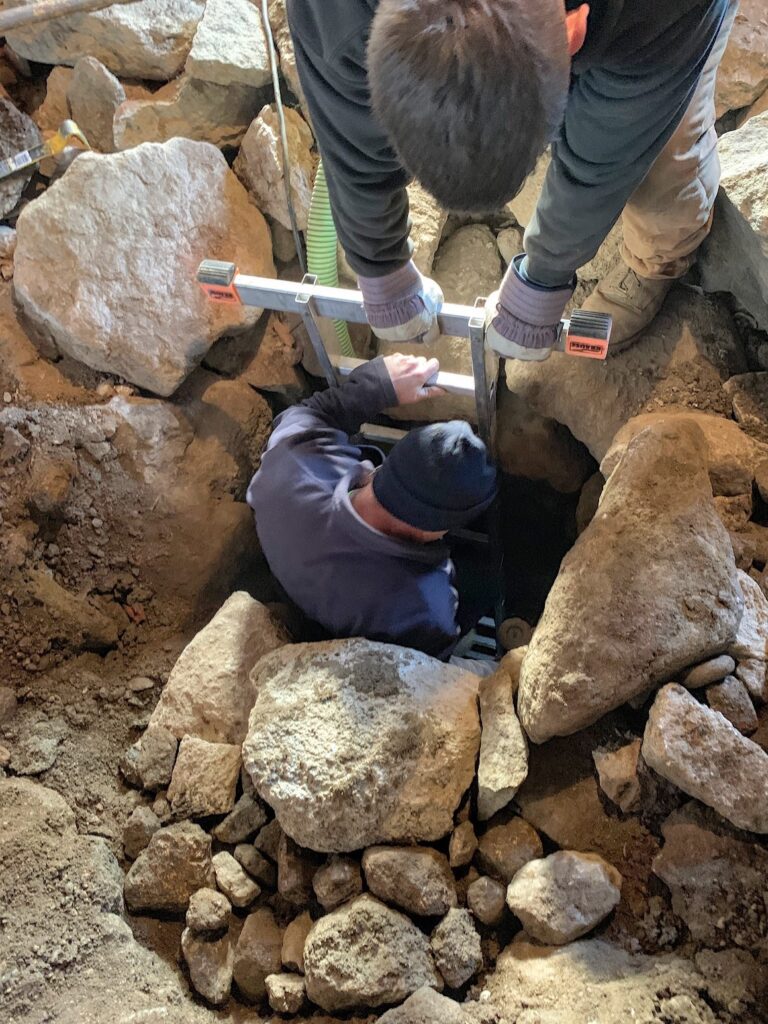




Once cleaned out, Nick and Bailey re-stacked the stones above ground level, and installed an overflow pipe that we can connect to the barn’s drainage system, so in the event the well fills in wet seasons, it won’t flood into the basement, or wash out the barn foundation anymore. Come spring, we’ll also build a cover for the well, and install a pump so we can use the water for the under-barn garage, as well as gardening.




This past week, we also took care of something that had been driving us nuts all winter- the vibrating floor. Most of our heating/cooling is handled by an air-to-air heat pump, which works at temps above 25 degrees, and doubles as a central air conditioner in the summer. For colder temps, we have a propane furnace back-up, which is located in the basement under our bedroom, and was suspended from the beams that hold up the floor. When the furnace would run, it would cause a vibration in the floor that had such bass-thumping that about made you nauseous. This past week, we grabbed some concrete piers and pressure treated lumber, and built a support structure to suspend the furnace from the floor, so no more vibrations!

Note the gray box hanging on the right side of the duct work in the photo above- that’s our new steam humidifier. Being an antique home, with no form of wind or weather barrier behind the siding, it’s bone dry in here in the winter. Most days, we saw low-to-mid 20 percent humidity levels, where “comfort range” is typically between 40-50% in the winter. A typical humidifier can’t evaporate enough water to make a difference in this environment, so we went with steam, which can put up to 30+ gallons a day into the air. We also found out our thermostat was not able to adequately handle the complexity of our heat system, so we had to upgrade the thermostat as well.
We also had our new kitchen counters installed (thanks Dylan!), but due to a cutting error, they are now cutting a new set of a different stone, and will install them next week. The photo at the bottom right is the new stone. We’re just so happy to have a functioning sink again- no more washing dishes in the bathtub! We’ll update in the next blog post.




We’ve begun patching the hearth room paneling from where the false ceiling was located, and where wiring has been installed and modified over the years. Note that we didn’t paint over the remaining outline of the original cupboard that was placed against the wall (to the right in the “after” photo below). This would have been an imposing piece of furniture, as it is ten feet tall! We can see marks from shelving in the paneling of the wall, and it appears to end roughly 3 feet from the floor, so the shelves/cupboard must have sat on top of a cabinet or sideboard. Here is the before and after:
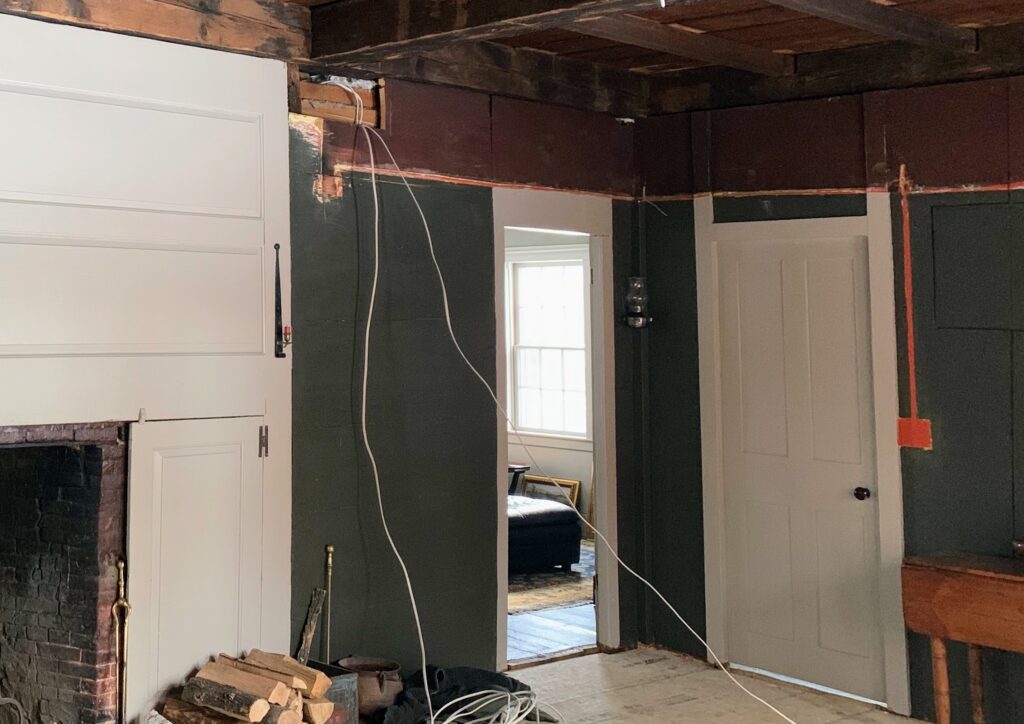

There are also countless little things we take care of day-to-day, as there will always be something that needs to be fixed, tweaked, maintained, or tinkered with. We keep pretty busy, but it’s rewarding work, and we’re starting to see the light at the end of the tunnel for the major stuff. With the addition of the humidifier, we’ve had to push off the installation of our hearth room floor, but we’re monitoring the moisture levels of the wood, and hope to start installing this coming Friday. It will hopefully take two days to install, then we’ll sand any rough edges, and apply a finish- likely the same boiled linseed oil/turpentine we used for the kitchen floor.
We’re still taking moments out to explore our new home, and the surrounding nature. There are so many trails within just a few miles, that we still have many to check out. We love the boulders in the area around our house- many are the size of small houses, and are rather imposing when you come upon them in the woods.
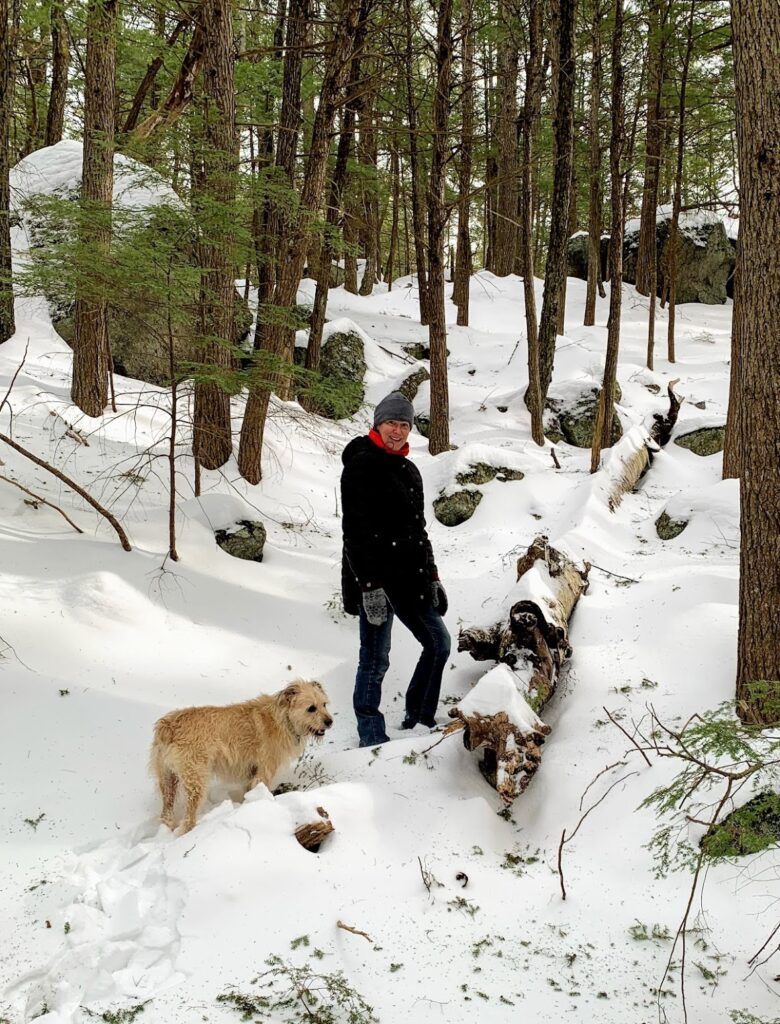

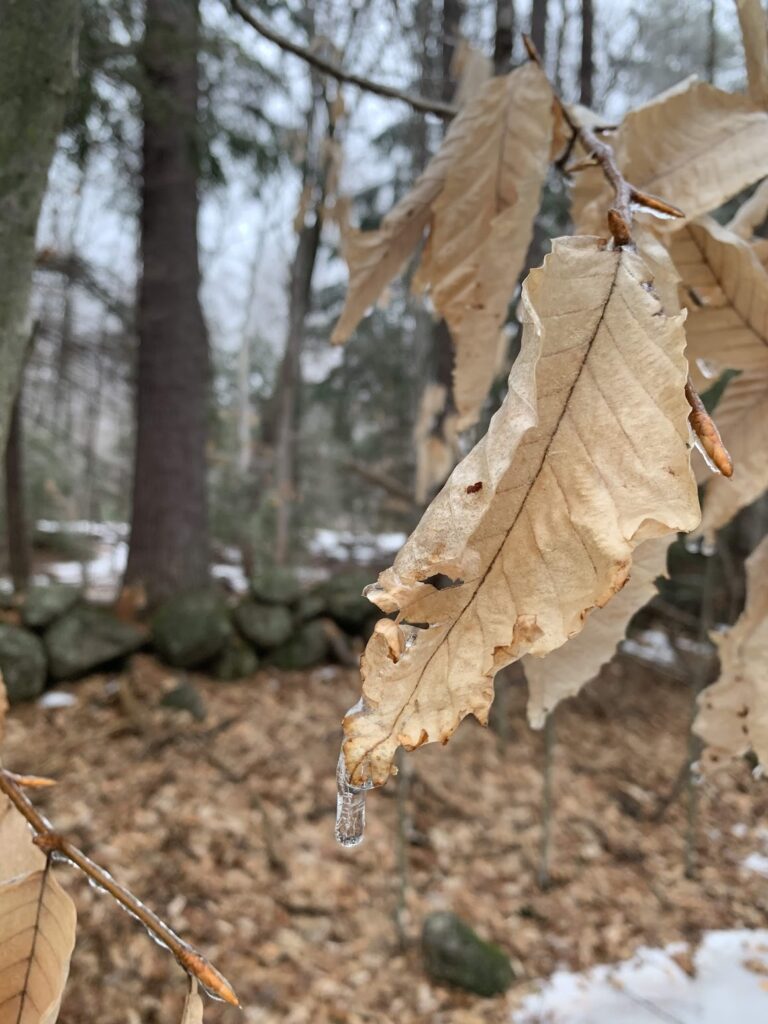



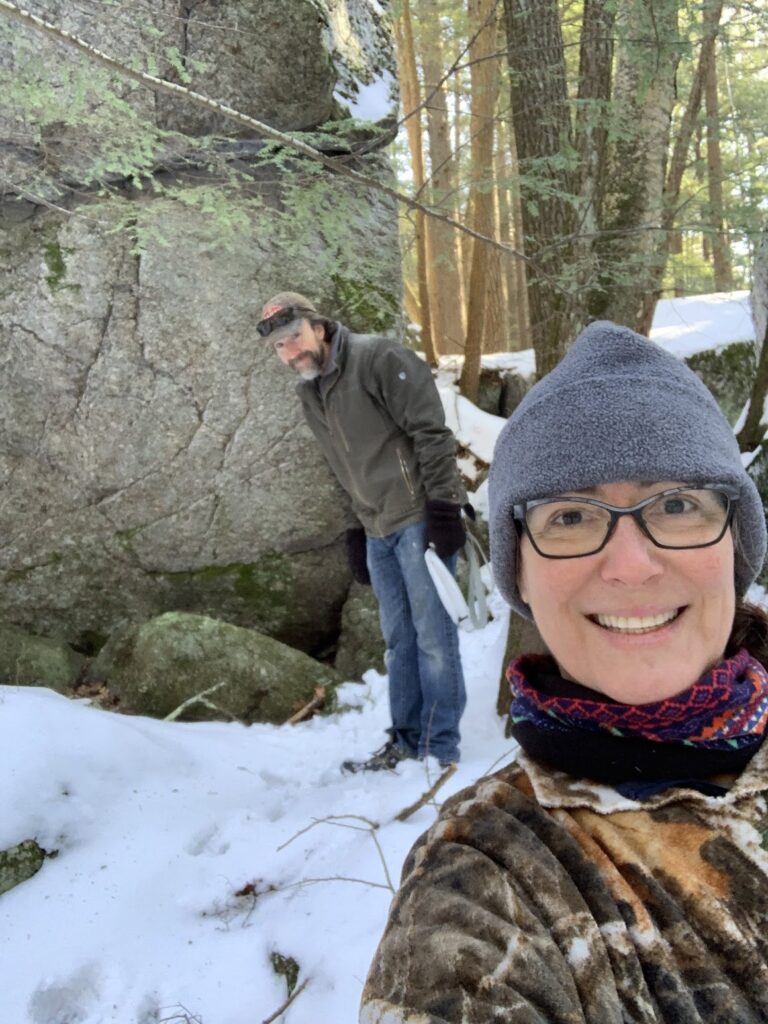

Hope you all are well, and thanks for stopping by the farm. Be well, and God bless!
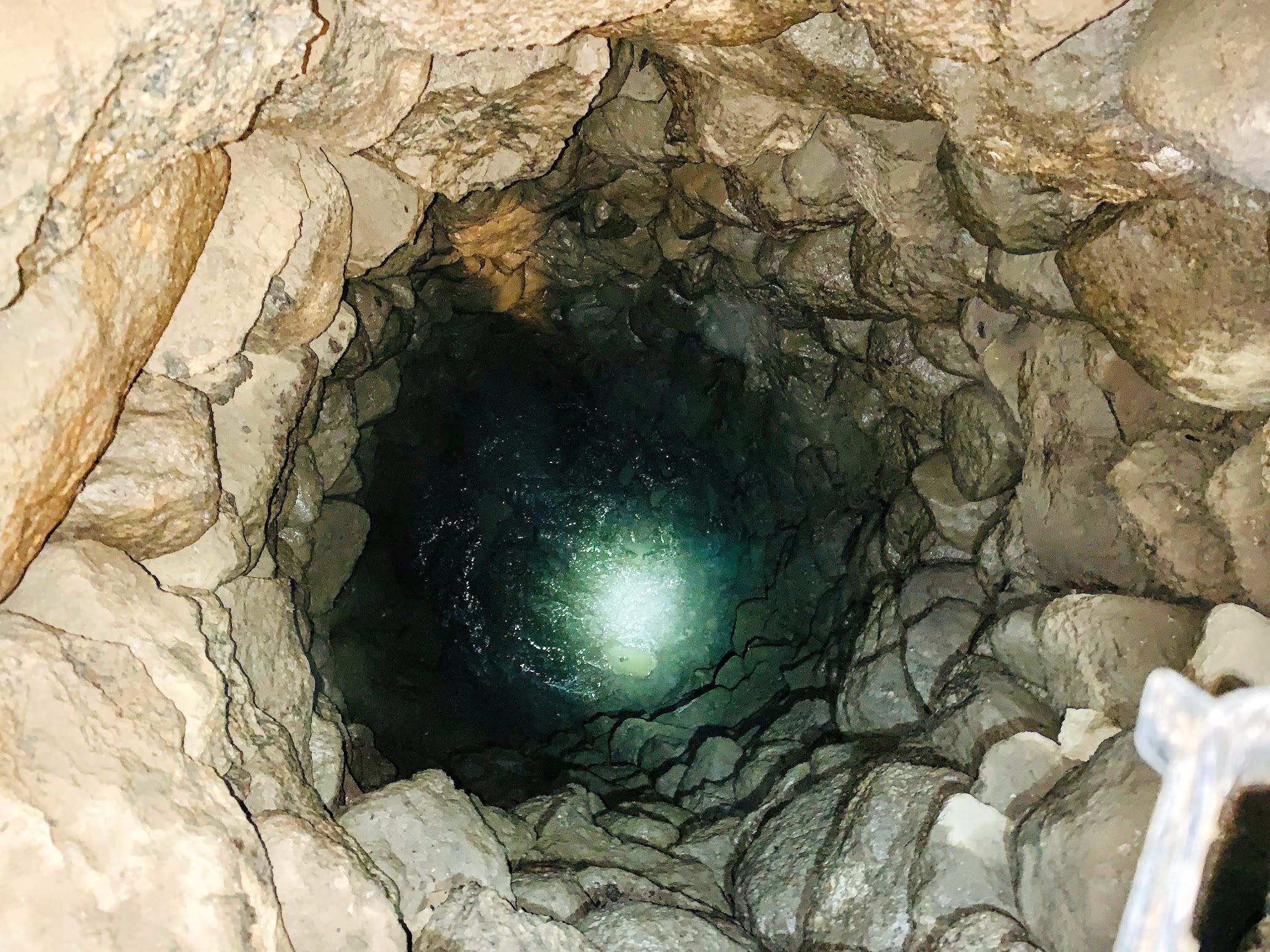
Leave a Reply